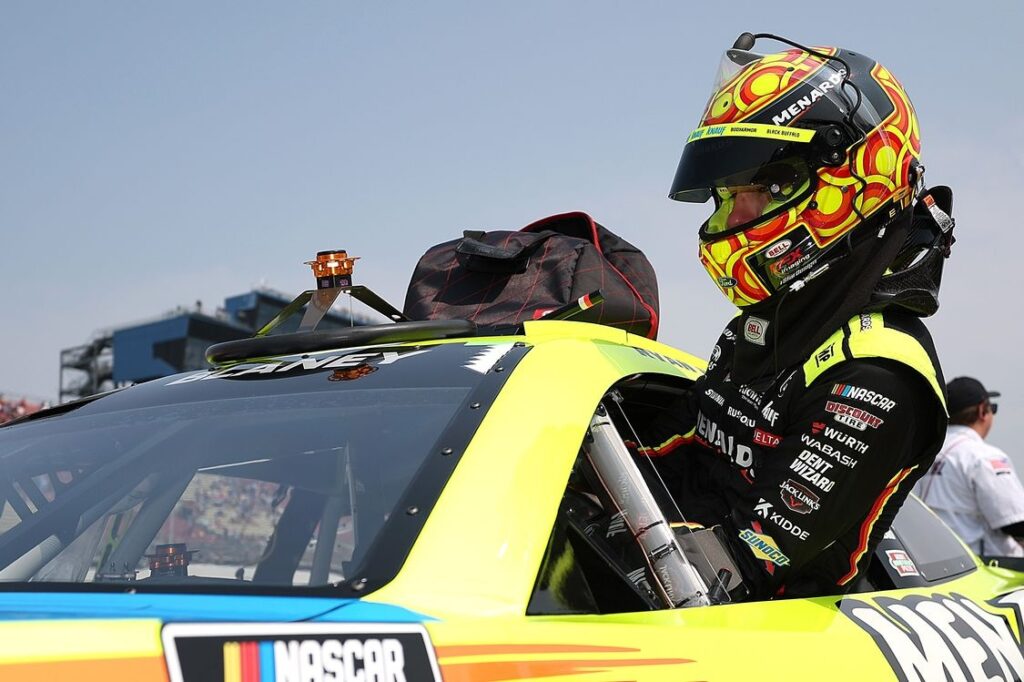Navigating the Unwritten Rules of NASCAR: Insights from Ryan Blaney
Inside the cockpit of a NASCAR vehicle, Ryan Blaney stands out as a candid and outspoken driver, known for his direct communication with competitors, especially when provoked. With over 350 Cup races under his belt and 14 victories-including a recent win at Nashville-Blaney has accumulated a wealth of experience and opinions on racing etiquette, strategies, and the unspoken codes that govern the sport.
Foundations of Racing Conduct: Lessons from a Legacy
Blaney’s approach to racing is deeply influenced by his father, Dave Blaney, a seasoned driver with 473 Cup starts. Ryan often credits his father for instilling in him the essential do’s and don’ts of racing, emphasizing respect and discipline on the track. “Everyone’s boundaries are different,” Blaney explained during a recent press conference. “My father raised me with a clear understanding of what’s acceptable and what’s crossing the line. I’ve been reprimanded many times in my youth for being overly aggressive or causing accidents, and those lessons stick with me.”
He recounted instances from his early racing days, where his father would set firm boundaries, emphasizing that aggressive moves must be balanced with respect for fellow drivers. Blaney recalls situations where he unintentionally spun out opponents-mistakes that were met with immediate correction from his father, reinforcing the importance of learning from errors rather than repeating them.
The Philosophy of Hard Racing and Respect for Contact
Blaney is an advocate for aggressive yet respectful racing, recognizing that contact is often an inevitable part of modern NASCAR, especially given the tight competition and sophisticated passing techniques. “I welcome tough racing,” he said. “Contact is just part of the game when everyone is pushing their limits. It’s about how you handle it and whether you learn from those moments.”
He believes that embracing physicality on the track fosters a more authentic racing experience, provided it’s within the bounds of sportsmanship. Blaney’s perspective aligns with the current trend in NASCAR, where close-quarters racing and strategic positioning often lead to contact-sometimes accidental, sometimes deliberate.
Learning from Mistakes: The Path to Better Racing
For Blaney, the key to maintaining a healthy racing environment is the ability to learn from mistakes. “Everyone races hard, and contact will happen,” he acknowledged. “But if it keeps happening without any growth or acknowledgment, that’s when issues arise. It’s crucial to reflect, apologize if necessary, and adjust your approach.”
He cited recent incidents, such as the Nashville clash involving Carson Hocevar and Ricky Stenhouse Jr., as examples of moments where drivers need to evaluate their actions. Blaney himself experienced a close call at Atlanta, where he was bumped from behind entering Turn 1. “Getting run over in the rear bumper and spun out-if that’s a one-time thing, it’s part of racing. But if it becomes a pattern, then it’s a problem,” he explained.
While he recognizes Hocevar’s talent and potential, Blaney emphasizes the importance of growth. “All drivers start young and aggressive. Carson is a skilled racer, but he needs to learn from these situations. It’s about refining your judgment and understanding when to push and when to back off.”
The Balance Between Aggression and Growth
Blaney’s stance is that drivers should stay true to their racing style but remain open to learning. “You don’t have to change who you are, but you should reflect on your actions and consider the consequences,” he said. “Spinning someone out intentionally or repeatedly causing contact is unacceptable. That’s when I draw the line.”
He shared personal experiences, including a moment at Atlanta where he was involved in a bump-and-run, illustrating that even seasoned drivers make mistakes. “I’ve been there. It’s part of the learning curve. The key is to recognize when you’ve crossed the line and to grow from it.”
Moving Forward: Reconciliation and Respect
Recently, Hocevar and Stenhouse Jr. discussed their on-track incident, signaling a willingness to move past their brief feud. Blaney hopes that such exchanges lead to better understanding among drivers, fostering a culture of respect and continuous improvement.
Current Trends and the Future of NASCAR Racing
As NASCAR continues to evolve, the sport’s emphasis on close racing and strategic maneuvering makes understanding and respecting the unwritten rules more important than ever. Drivers like Blaney exemplify a balanced approach-combining aggressive competition with respect and a commitment to learning from each encounter.
Stay Informed
For fans and enthusiasts eager to stay updated on NASCAR developments, subscribing to real-time news alerts ensures you won’t miss key moments, from race highlights to driver insights. The sport’s dynamic nature promises ongoing excitement and opportunities for growth-both on and off the track.

